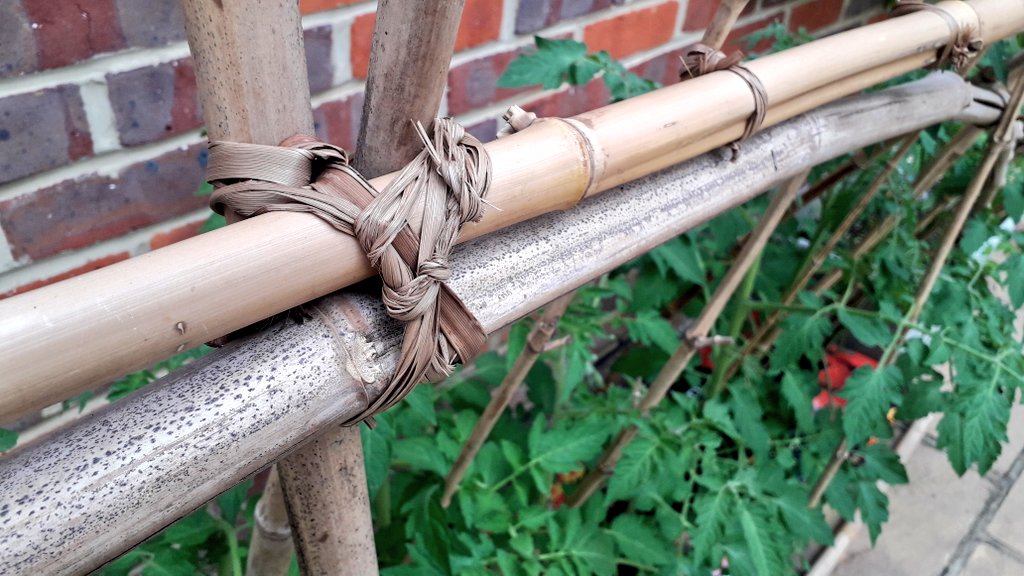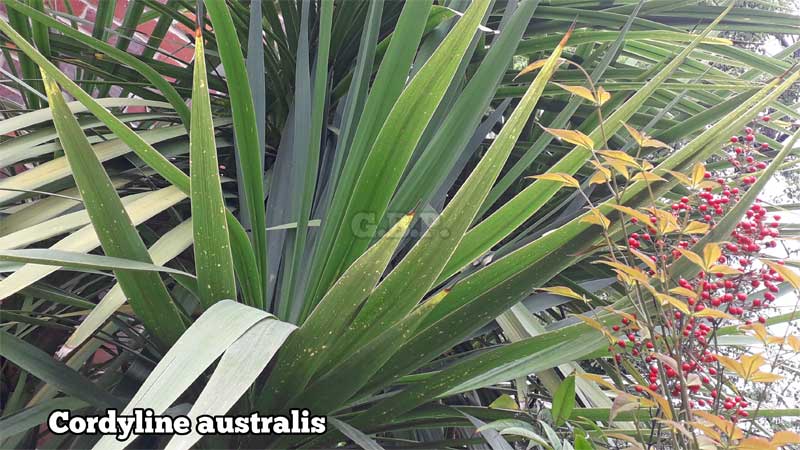Cordyline australis is an exotic plant, also known as ‘Torbay or Cornish Cabbage Palm’. This upright plant has dark green sword-like leaves and clusters of white scented flowers, bees’ magnet.
The dry brown leaves have a special use that many gardeners will love to know.
This article shows you how to prepare and use the leaves as an alternative to artificial garden ropes.
Uses of Cordyline australis leaves
Buy Cordyline australis ‘Cornish Cabbage’ plants at Crocus
This plant has long slender leaves. They are thin, flexible and strong.
Plants with leaves like these are used successfully in traditional and survival settings for tying objects together.
If you have a Cordyline australis plant in the garden, you can use the leaf as an alternative to garden rope.
Check out the 5 garden projects where the Cordyline australis leaves were used successfully as ropes.
Use Cordyline australis ropes in the making of bamboo hoops and garden netting
How to prepare Cordyline australis leaves for garden rope
The long narrow leaves of Cordyline australis are perfect natural garden ropes.
As shown in the garden projects, you can also use them to tie garden plants, flowers, new shoots and any garden plant that needs tying.
Here is how to prepare the dry leaves to use as garden ropes.
- Collect the dry brown leaves.
- Soak them in water overnight.
- Strip each leaf into smaller (preferable) strands.
- Use the strands to tie plants.
To tie large objects, use a whole leaf or two. You can join the leaves together if you need a longer length.
An example is this DIY Garden Planter Box, instead of nails we used only Cordyline australis leaves to build it.
Many people in the Pacific and Southeast Asia use the leaves from the palm trees, coconut and yacca plants and Cordyline fruticosa as ropes for tying plants.
They also use the long green leaves for arts and crafts.
However, the dry leaves are best for tying plants, flowers and shoots.
About Cordyline australis plant
Cordyline australis is evergreen and hardy shrub, commonly known as ‘Torbay or Cornish Cabbage Palm’. The Cornish Cabbage plant has long leaves and palm-like stems.
It produces a bunch of numerous tiny creamy white flowers in summer.
You can keep an individual plant (or keep it lower) by pruning the old plants and encouraging a new single plant to take over.
This exotic shrub is perfect for landscaping, planted as a standalone plant or centrepiece.
There are several cultivars of Cordyline australis ‘Cornish Cabbage Plants’, ranging from variegated leaves to green and burgundy red.
They are undemanding and low maintenance.
The three common cultivars of Cordyline australis Cabbage plants are
- Green Cordyline australis,
- Cordyline australis red star and
- Variegated Cordyline australis 'Torbay Dazzler'.
See the full collection at Crocus
Do you know a garden plant like Cordyline australis?
As mentioned earlier, the dry brown leaves of Cordyline australis (‘Cornish Cabbage Plant’) are fantastic alternatives to garden ropes.
We’ve used the leaves as garden ropes in many garden projects (as shown in the images).
Hope you can try the ropes out if you have a Cordyline australis, Cordyline fruticosa or Yacca plant growing in your garden.
Do you have a garden plant like the bamboo stems or Yacca, Cordyline australis or Cordyline fruticosa plants? We would love to hear from you. Let us know in the comments below.
Here is the YouTube video of the strawberries netting project where we use the Cordyline australis leaves as a garden rope.



